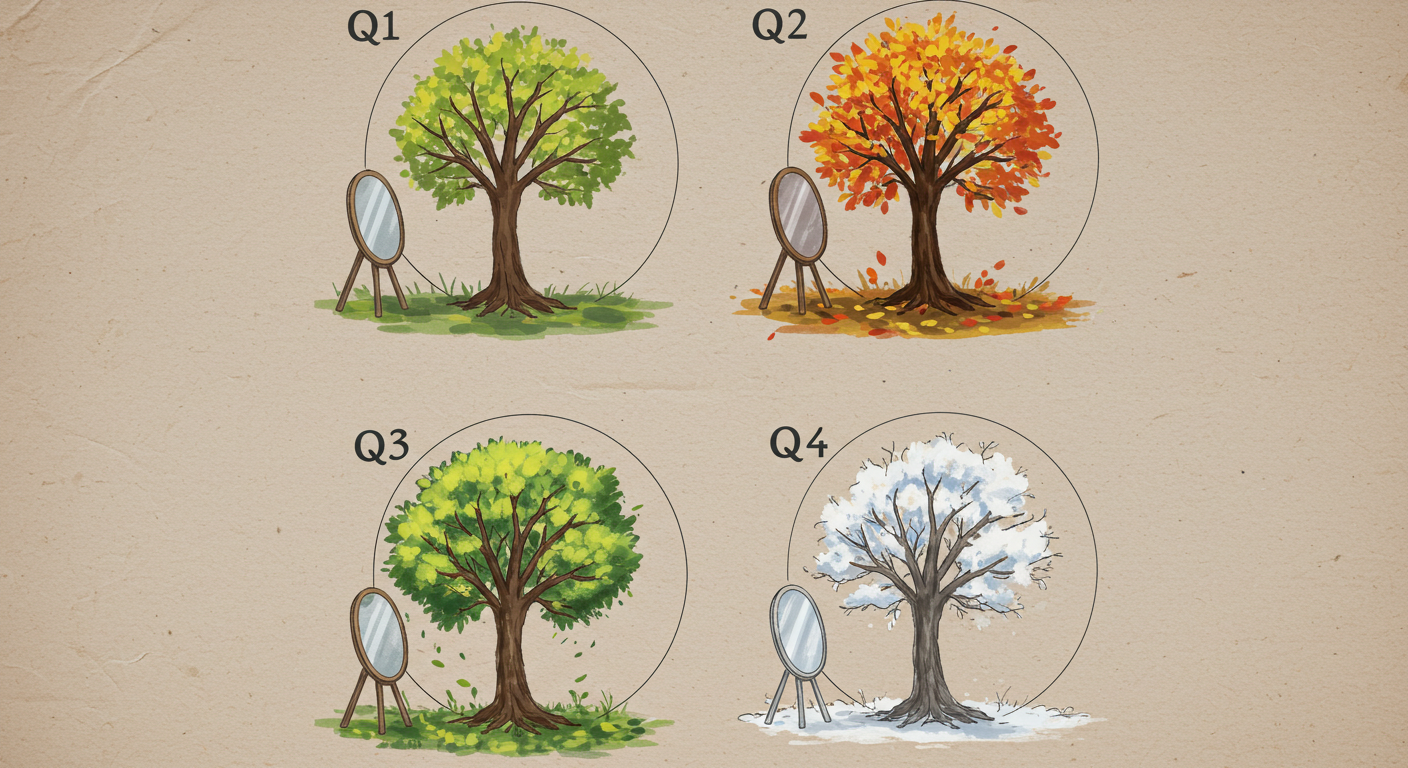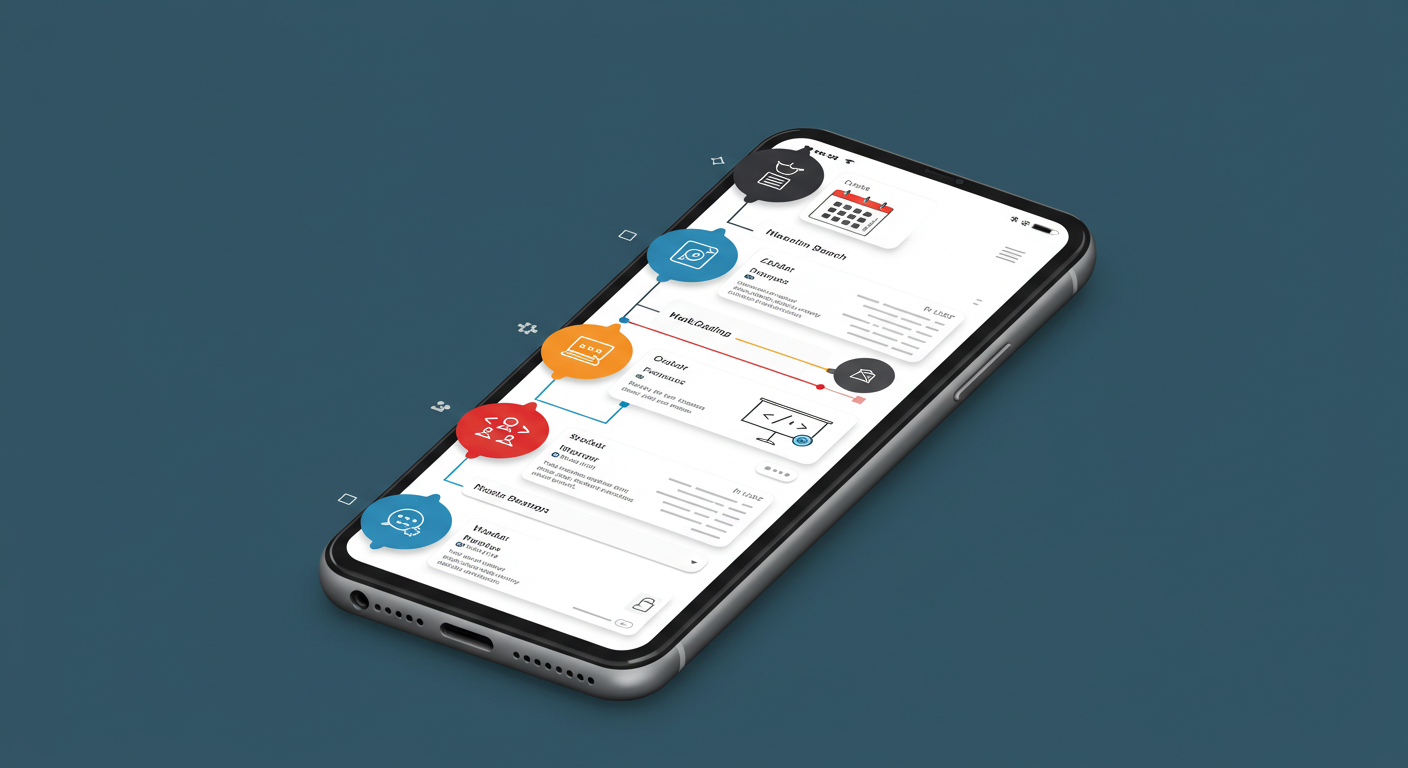1. Quarterly reflections tied to outcomes
One of the most effective shifts teams make is to move from annual to quarterly reflections, especially when paired with an OKR cycle. Instead of waiting 12 months to evaluate performance, employees reflect every 90 days, anchored in what they set out to achieve.
The key here is rhythm and relevance. OKRs provide a natural structure for goal-setting and progress measurement. When performance reflections follow that cadence, they feel purposeful — not performative.
What makes this work well:
- The review stays tightly scoped to the most recent cycle, reducing recency bias.
- Feedback aligns with measurable goals, not just soft skills or personality traits.
- Employees self-assess alongside manager reflections, which builds mutual understanding.
Example prompt set:
- What did you aim to achieve this quarter?
- Where did you have the most impact, and how did you know?
- What would you do differently in the next cycle?

2. Project-based reviews at natural breakpoints
Instead of centering reviews around a calendar, some teams align them to project milestones — product launches, campaign completions, or initiative closeouts.
This model brings the review closer to the work. It’s easier for people to reflect on decisions, collaboration, and execution when those experiences are still fresh.
Why this approach matters:
- Context is preserved — you’re not asking people to recall something from eight months ago.
- Peer feedback is more accurate and grounded in specifics.
- It creates a habit of closing loops after major efforts, which builds reflection into the team’s operating system.
Recommended structure:
Use the STAR method (Situation, Task, Action, Result) to capture individual contributions. Invite 2–3 collaborators to share short reflections on what worked and where there were challenges. Keep it light — this isn’t a post-mortem, it’s a growth opportunity.

3. Continuous, triggered reviews based on work events
Some companies go even further and remove time from the equation entirely. In this model, performance reviews are triggered by moments of significance — things like a high-stakes presentation, a leadership moment, or a major incident.
The logic is simple: review performance when it happens, not when the calendar says so.
This is most powerful when integrated into tools teams already use — Slack, GitHub, calendars — and paired with lightweight feedback formats like SBI (Situation, Behavior, Impact).
How to make this work:
- Set up smart nudges to suggest feedback when certain events occur (e.g. after a big meeting).
- Make the review process short — 2–3 minutes max.
- Aggregate these into a rolling feedback history that can be reviewed quarterly or biannually.
Why it’s powerful:
- It reduces the pressure of “capital-R Reviews” by normalizing reflection.
- Patterns emerge over time, showing strengths and blind spots.
- It balances immediate feedback with long-term insight.

4. Career-focused reviews that look forward, not just back
Not all reviews need to be evaluative. In fact, some of the best performance conversations are framed as career development reviews — structured dialogues about growth, stretch, and next steps.
This model shifts the purpose of the review. Instead of asking “How did you perform?” the question becomes, “Where are you headed, and what do you need to get there?”
When this shines:
- During promotion windows, role transitions, or re-orgs.
- When someone expresses interest in a new path (technical leadership, people management, etc.).
- As part of a regular development cadence — every 6 months, for example.
What to include:
- Themes from past feedback and reflections
- Skills the person wants to deepen or add
- A few near-term bets to test their next-level capabilities

Closing thought: reviews as clarity, not ceremony
The most effective performance reviews don’t feel like reviews — they feel like clarity. About what’s working. About what’s next. About how to keep getting better.
When done right, performance reviews aren’t a single moment — they’re the visible tip of a much deeper system: one where feedback flows freely, goals are visible, and development is continuous.
If you’re rethinking how your teams reflect on performance, start small. Align with the rhythms of your work, not the rhythms of HR tradition. Build a culture where people don’t just wait to be reviewed — they actively review themselves and grow from it.

